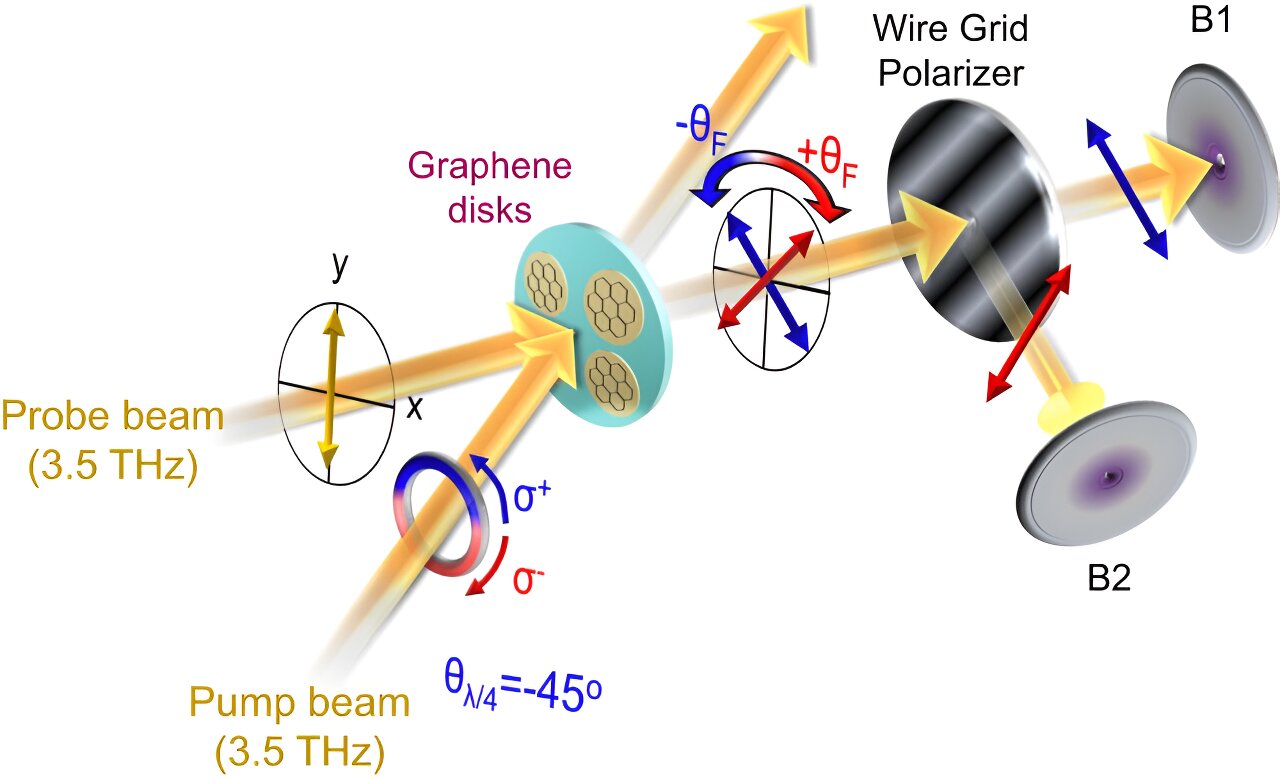Physicists at the University of Duisburg-Essen and their cooperating partners have discovered that tiny graphene sheets can become electromagnets under infrared radiation. The study is published in the journal Nature Communications.
The sample itself is invisible to the human eye: There are tiny disks on a 2 x 2 millimeter surface, each with a diameter of 1.2 micrometers, just one hundredth the width of an average human hair. They consist of two layers of graphene—two sheets of carbon atoms that lie on top of each other like pancakes. Their electrons move freely in the material and can be influenced by electromagnetic fields.
The working group of Prof. Dr. Martin Mittendorff from Experimental Physics at the University of Duisburg-Essen (UDE) has been investigating waves in electron systems, so-called plasmons, within the Collaborative Research Center 1242 for years. In this case, the team used circularly polarized terahertz (THz) radiation in the infrared range to excite the electrons. “You can think of the graphene sheets as buckets filled with water—the electrons,” explains Mittendorff. “If you stir the inside of the bucket with a stick, circular currents begin to form.”
In analogy, the charge carriers excited by the corkscrew-shaped THz radiation move in a circular motion in the disks and thus act like tiny electromagnets. Within the experiment, magnetic fields in the range of 0.5 Tesla were generated; this equates to around 10,000 times the Earth’s magnetic field. The frequency of the plasmon can be adjusted via the diameter of the graphene disk. In terms of their effect, the tiny disks are comparable to strong permanent magnets, but they can be switched on or off within picoseconds—in other words, in a trillionth part of a second.
Although the experiments are basic research, there are realistic potential applications: By using graphene disks, the physicists have developed optically switched magnetic fields that can be used to influence other materials in the vicinity. In quantum dots that illuminate screens, for example, the color of the light can be adjusted. As for magnetocaloric materials, they change their temperature depending on the magnetic field applied.
2023-12-04 11:41:02
Post from phys.org rnrn
